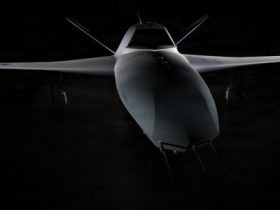MILAN — The widespread use of anti-drone netting on armored vehicles to protect against low-altitude drone attacks in Ukraine is driving defense manufacturers in different locales to develop their own cloaks.
Among them is United Arab Emirates-based TAC Armored Vehicles, which recently rolled out its new TAC-Q-Net, a lightweight “cable mesh” designed to defend against low-altitude drone strikes.
The Emirati company released a picture showing a Jedi armored personnel carrier equipped with the countermeasure, reminiscent of other improvised vehicle protection systems seen on the battlefield in Ukraine. These have included everything from metal cages to flexible nets.
It is intended to serve as an additional physical barrier, preventing direct contact with the vehicle or causing drones to deflect.
The use of cable mesh, netting and similar protective systems on vehicles have proven effective in Ukraine. However, experts say that the risk is lower in other parts of the world.
“The UAE faces a much lower probability of encountering FPV threats within the country itself, but both environments — Ukraine’s humidity and Abu Dhabi’s dry, sandy conditions — present challenges to the robustness of the system and will require maintenance,” Federico Borsari, non-resident fellow at the Center for European Policy Analysis, said.
He highlighted that the utility of the cable mesh is primarily to provide last-resort protection against drones, complementing other countermeasures — it will not, by itself, make a vehicle drone-proof.
“It’s also important to note that the effectiveness of the mesh or netting declines with multiple strikes; if the second or third drones do not disable the vehicle, the fourth or fifth ones are even more likely to succeed,” he said.
A highly-proficient drone pilot could exploit the gaps and holes that connect parts of the netting and strike these parts of the vehicle, Borsari added.
Other manufacturers offering similar systems include British company QinetiQ, which developed its Q-Net over a decade ago. Using a net design, the technology was first deployed in Afghanistan in 2010 and is used on over 14,000 platforms in active combat to protect lightly armored vehicles against rocket-propelled grenades.
Elisabeth Gosselin-Malo is a Europe correspondent for Defense News. She covers a wide range of topics related to military procurement and international security, and specializes in reporting on the aviation sector. She is based in Milan, Italy.
Read the full article here








Leave a Reply